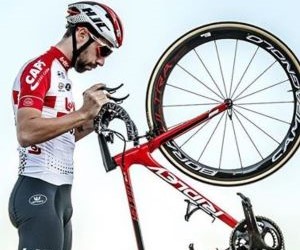Learn how to choose gravel bike geometry by comparing stability, comfort, and performance factors that match your riding style and terrain needs.
WHAT ARE THE KEY FACTORS IN AERO BIKE DESIGN?
Aero bikes are built for speed, slicing through the wind with minimal resistance. But true aerodynamic performance is about more than just looks. It’s a precise combination of tube shaping, rider integration, stiffness, weight balance, and wind tunnel refinement. Whether you're a time trialist, triathlete, or road racer chasing marginal gains, understanding the key design factors behind an aero bike will help you make smarter gear choices, optimize fit, and ride faster with less effort. This guide breaks down the aerodynamic principles, component integration, and practical trade-offs that define modern aero bikes.

Frame tube shapes and airfoil profiles
Minimizing drag with engineered tube profiles
At the heart of every aero bike is a frame designed to cheat the wind. Engineers use truncated airfoil shapes—often called “Kammtail” or “Kammback” profiles—that mimic airplane wings but are optimized for real-world yaw angles and UCI regulations. These shapes provide the aerodynamic benefits of full airfoils while maintaining structural strength and manageable weight.
Each frame tube—the downtube, seat tube, head tube, fork blades, and even the seat stays—is shaped to reduce frontal drag while managing turbulent airflow behind the bike. Subtle transitions and tight junctions between tubes are carefully refined in wind tunnel testing and CFD simulations. The smaller the wake behind each component, the faster the bike goes at the same wattage.
Recent advancements include deeper section tubes, narrow frontal areas, and dropped seat stays. Some manufacturers even tailor frame shapes to specific rider sizes or average speeds, pushing customization deeper into aero optimization.
Kammtail airfoils balance aero and stiffness
Tube shaping is optimized for real-world yaw angles (5–15°)
Dropped seat stays reduce drag and smooth air over rear wheel
Blended tube junctions reduce turbulent wake zones
CFD and wind tunnel data guide micro-design refinements
The more precisely shaped the tubes, the more efficiently your watts convert into forward motion—not into stirring the air behind you.
Component integration and system design
From cockpit to brakes, every detail matters
Aero design doesn’t stop at the frame—it’s about the entire system. Modern aero bikes feature fully integrated front ends with hidden cables, one-piece cockpits, and internal routing from lever to derailleur. These systems reduce drag by cleaning up airflow around the most turbulent zones: the handlebars, stem, and front brake area.
Integrated storage, such as top-tube boxes or aero water bottles, also plays a role. On triathlon or time trial setups, hydration and nutrition systems are shaped to extend the aerodynamic line of the bike instead of disrupting it. Even bottle placement on the downtube and seat tube can affect drag by up to 8–10 watts.
Wheel and tire selection also matters. Deep-section rims (50–80mm) paired with properly matched tire widths (25–28mm) create a smooth transition that limits airflow separation. Tubeless setups reduce rolling resistance and allow for optimized tire pressures—important when chasing marginal gains.
Internal cable routing reduces frontal turbulence
One-piece cockpits improve airflow and stiffness
Aero hydration/nutrition storage adds speed without compromise
Deep rims and tire matching optimize wheel system drag
Integration must balance aero with adjustability and comfort
Well-integrated bikes are faster not just because of their shape—but because every component works as a unified, low-drag machine.
Rider position, stiffness, and real-world factors
It’s not just the bike—it’s how you ride it
The biggest contributor to aerodynamic drag isn’t the bike—it’s the rider. That's why aero bike design also prioritizes geometry that allows an aggressive, stable, and sustainable position. This includes lower stack heights, longer reaches, and steeper seat tube angles to help riders stay in a tucked posture longer without losing power.
Frame stiffness plays a dual role here. An aero bike must be torsionally stiff to maintain responsiveness, especially under high-speed cornering or sprinting. But too much rigidity can create harshness, so designers tune carbon layups for directional compliance, preserving comfort while holding shape under load.
Real-world riding includes crosswinds, rough roads, and imperfect pacing. Aero bikes are now tested for stability in turbulent air and optimized for yaw angles that riders actually experience outdoors. Rider fit, body movement, and fatigue also influence how well an aero bike delivers on its promise of speed.
Aggressive geometry supports aero tuck positions
Stiffness enhances power transfer and handling
Carbon layup tuning manages vibration and comfort
Yaw stability matters more than lab drag numbers
Rider fit and flexibility are key to sustained aero gains
An aero bike’s design shines when it works with the rider—not just under them—turning every pedal stroke into wind-slicing momentum.
YOU MAY ALSO BE INTERESTED






